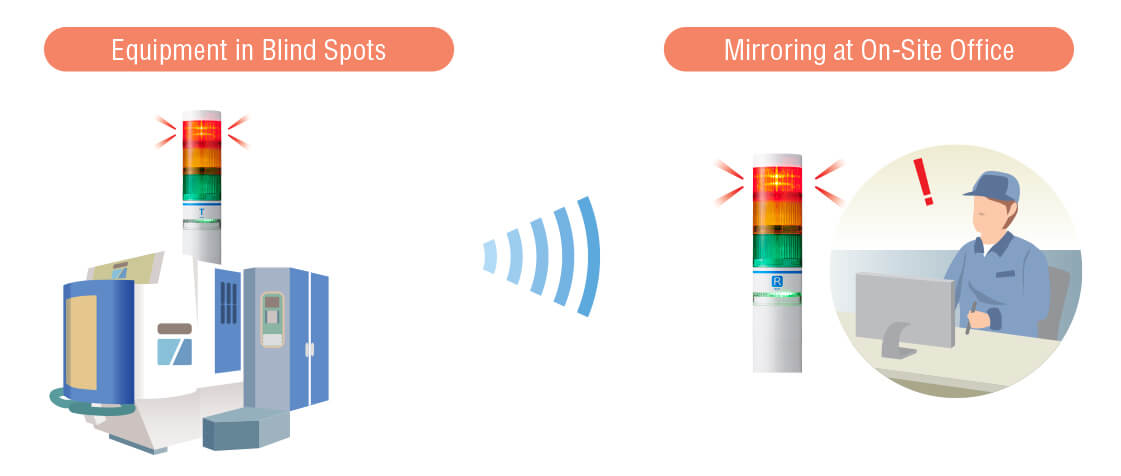Jan 4th 2024
Enhancing Safety and Efficiency: The Benefits of Audible Alarms and Visual Signals in Manufacturing Environments
Safety within manufacturing environments is paramount, with a primary focus on preventing accidents and ensuring the well-being of workers. The integration of audible alarms and visual signals has proven to be a pivotal strategy in accident prevention, significantly enhancing safety protocols while concurrently optimizing operational efficiency.
Early Hazard Awareness: Audible alarms provide an immediate alert system, notifying workers of potential dangers or critical situations. These alarms serve as a preemptive measure, allowing individuals to swiftly react and take necessary precautions to avoid accidents.
Enhanced Communication: Visual signals complement audible alarms, offering a multi-dimensional approach to hazard notification. Color-coded lights, flashing beacons, and illuminated signs serve as visual cues that reinforce auditory warnings, aiding in communication even in noisy or busy environments.
Swift Response Time: Accidents in manufacturing settings can escalate rapidly if not addressed promptly. Audible alarms and visual signals minimize response times by providing clear, unmistakable indications of the type and location of the hazard, enabling workers to respond swiftly and effectively.
Reduced Accident Rates: Studies reveal a direct correlation between the implementation of audible alarms and visual signals and a decrease in accident rates. By promptly alerting personnel to potential hazards, these systems mitigate risks and contribute to a safer workplace.
Enhanced Safety Culture: Incorporating these safety measures fosters a culture of vigilance and responsibility among employees. The consistent use of alarms and signals encourages adherence to safety protocols, promoting a collective mindset focused on accident prevention.
Compliance and Standards Adherence: Many regulatory bodies require specific safety measures within manufacturing facilities. Utilizing audible alarms and visual signals not only ensures compliance but also demonstrates a commitment to meeting or exceeding safety standards.
Training and Awareness: These safety systems also serve as valuable training tools. Familiarizing workers with different alarm sounds and visual cues during onboarding or regular safety drills enhances their preparedness to handle emergencies.
Increased Efficiency: Contrary to the perception that safety measures may impede productivity, well-implemented audible alarms and visual signals can actually enhance efficiency. Workers feel more secure and focused, knowing that their workplace prioritizes their safety.
Customization and Adaptability: Modern alarm systems offer customizable features that can be tailored to specific environments and hazards. This adaptability ensures that the alarms and signals are optimized for the unique needs of each manufacturing setting.
Continuous Improvement: Regular assessment and updates to alarm systems enable continuous improvement in safety measures. Analyzing near-miss incidents or feedback from workers allows for refinement, ensuring that safety protocols remain effective and relevant.
PATLITE recently released the wireless WIO series, a Bluetooth enabled, long-range communication system that activates signaling devices remotely with switch, relay or sensor trigger. Spanning 100 meters in line-of-sight, the reach can extend to up to 400 meters with the relay function. No PC required, just plug & play.
Case Study
BEFORE: When unexpected shutdowns occur beyond operator control, maintenance personnel are responsible for resolving the issue. However, maintenance personnel may not be in their office or in close proximity, and locating them can result in costly delays.
AFTER: By setting up a wireless call light system, maintenance can be alerted even in remote locations on site for immediate response.
BEFORE: Limited visibility from the on-site office hinders staff from monitoring equipment operation status, causing delays in responding to processing completion and equipment shutdown, ultimately diminishing productivity.
AFTER: The installation of signal lights, strategically placed to reflect the equipment's status in a visible location from the on-site office, enhances response times to issues and problems, thereby optimizing productivity and efficiency.
The integration of audible alarms and visual signals is indispensable in promoting a safer and more efficient manufacturing environment. These systems not only prevent accidents but also cultivate a workplace culture centered on safety, compliance, and continuous improvement. By investing in these measures, businesses prioritize their most valuable asset—their workforce—while simultaneously optimizing productivity and operational outcomes. Make Automation Distribution your trusted resource for enhancing safety and efficiency in your manufacturing environment at 1-888-600-3080 or schedule a 15-minute call here.



